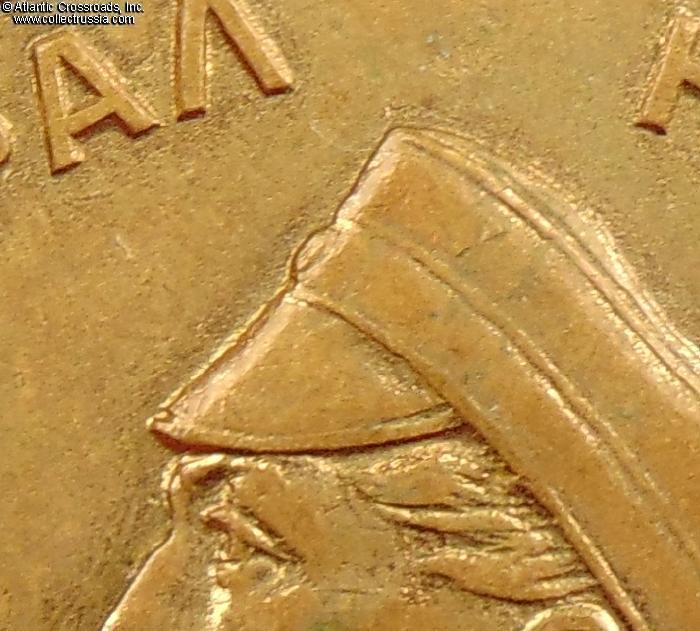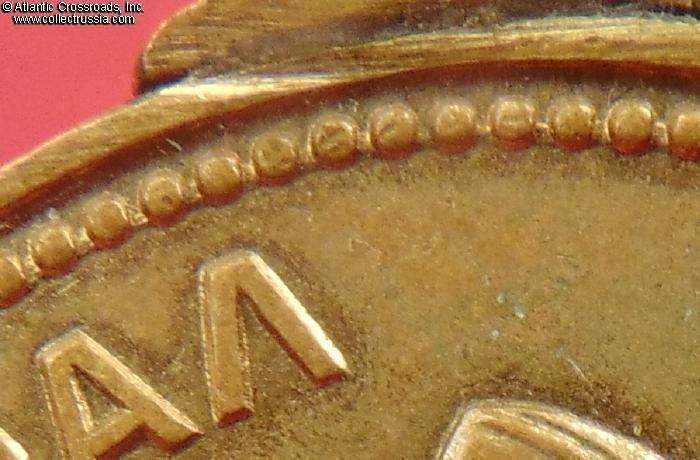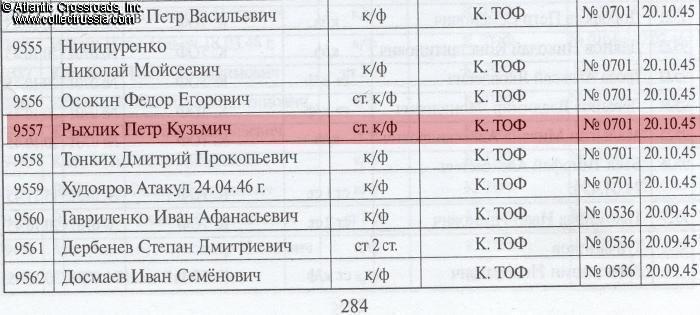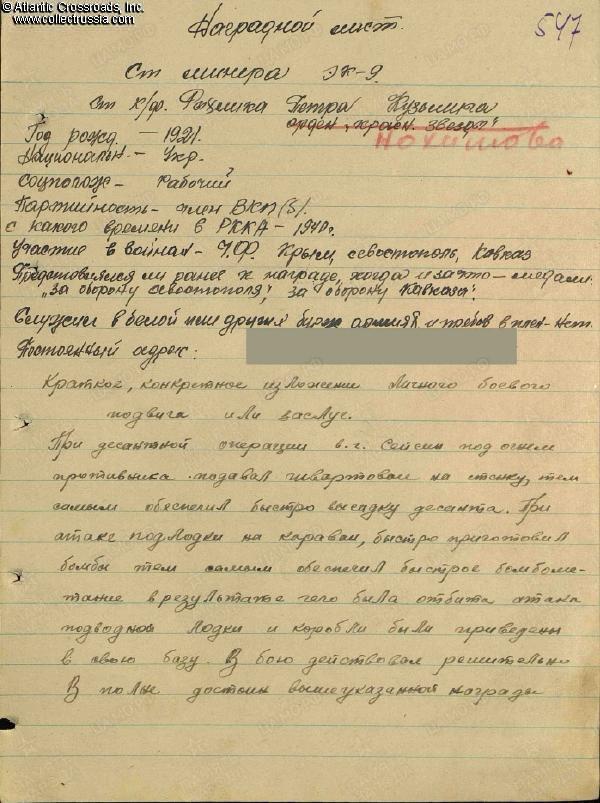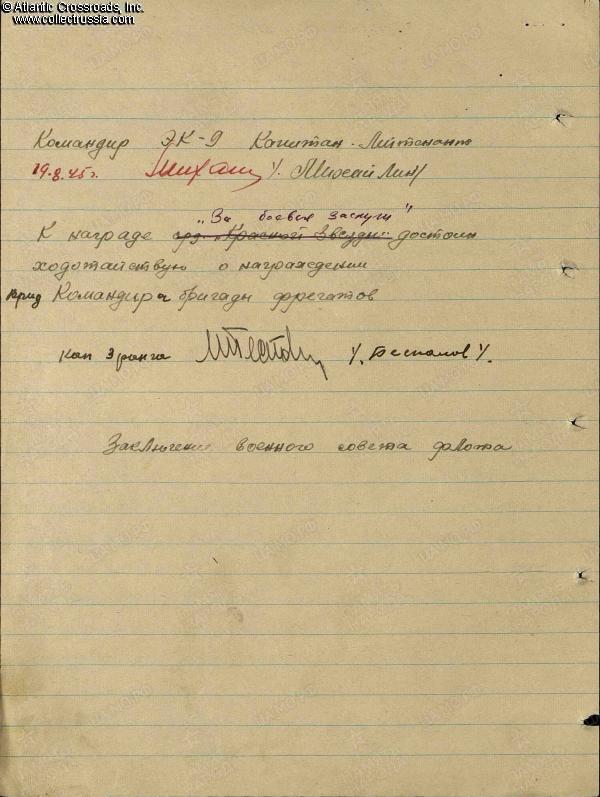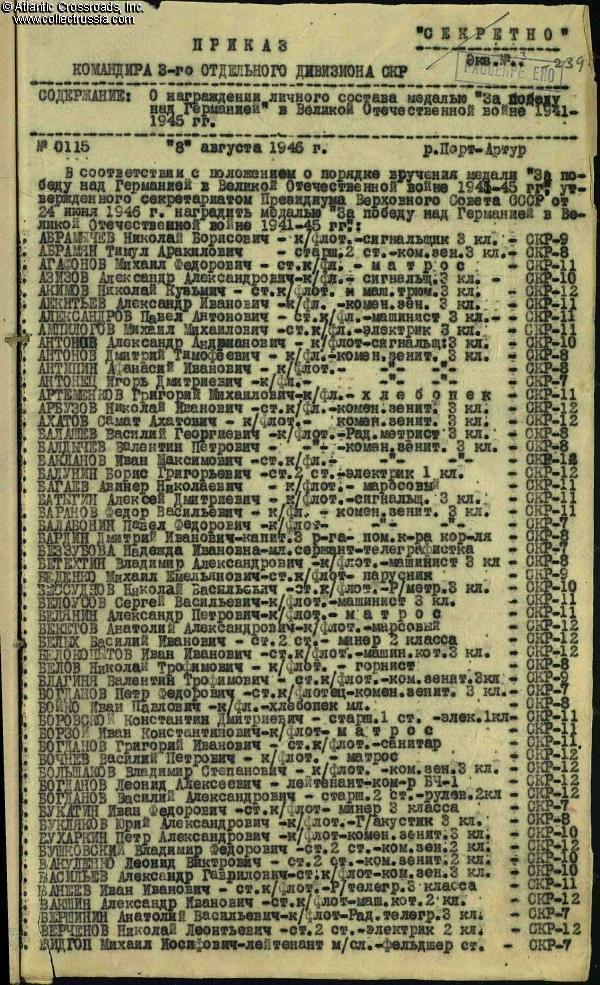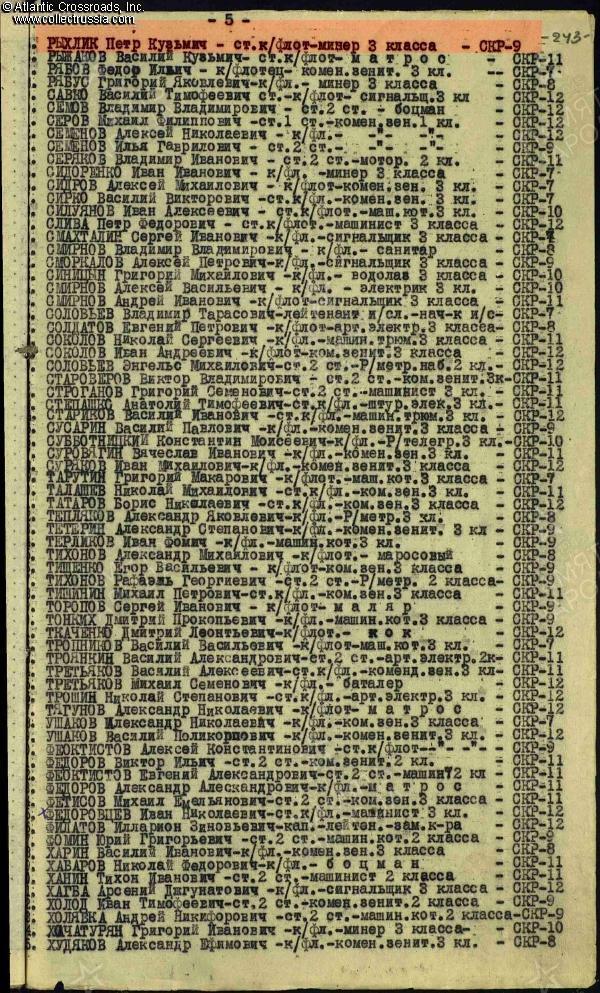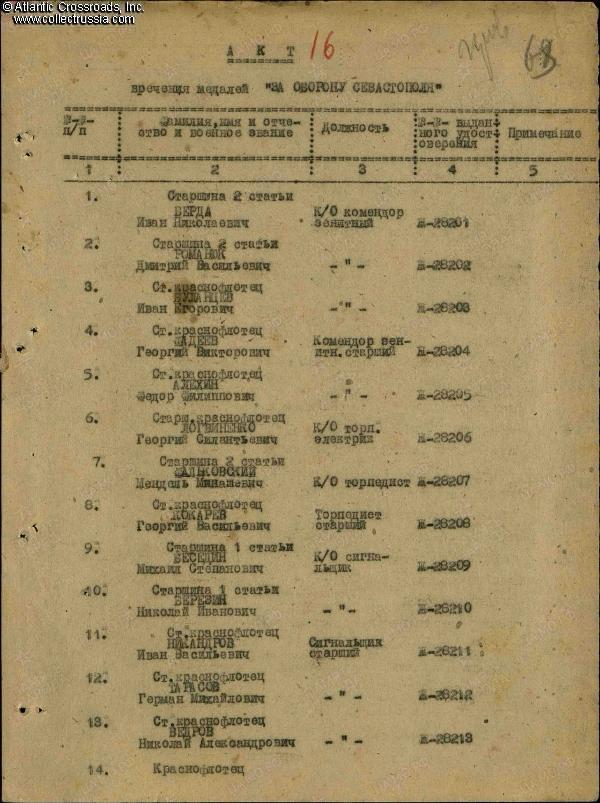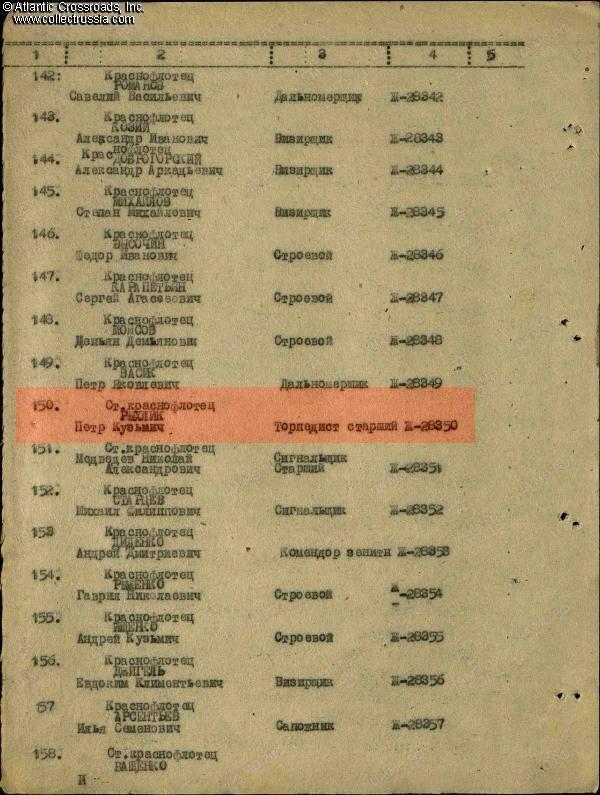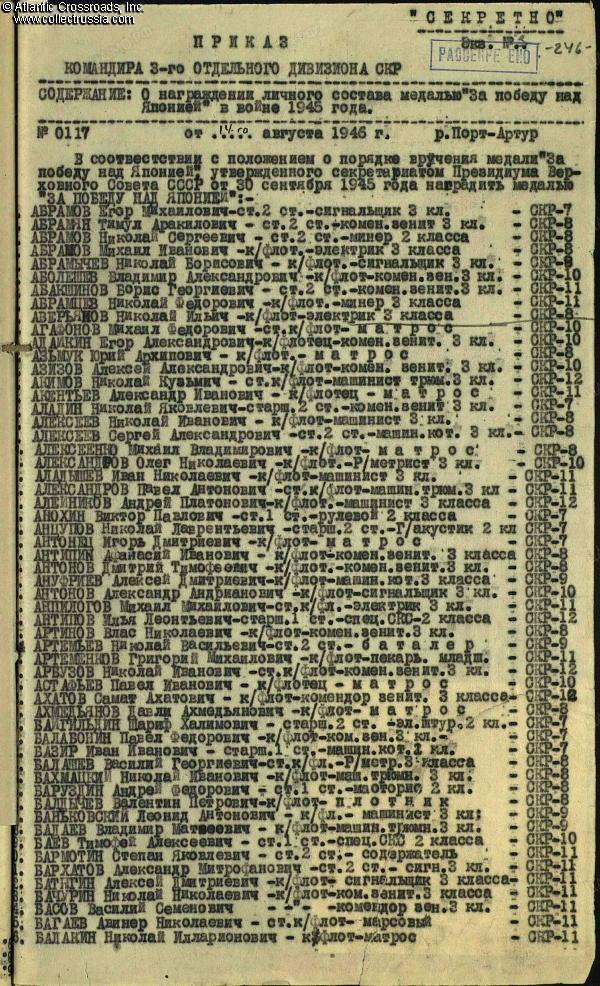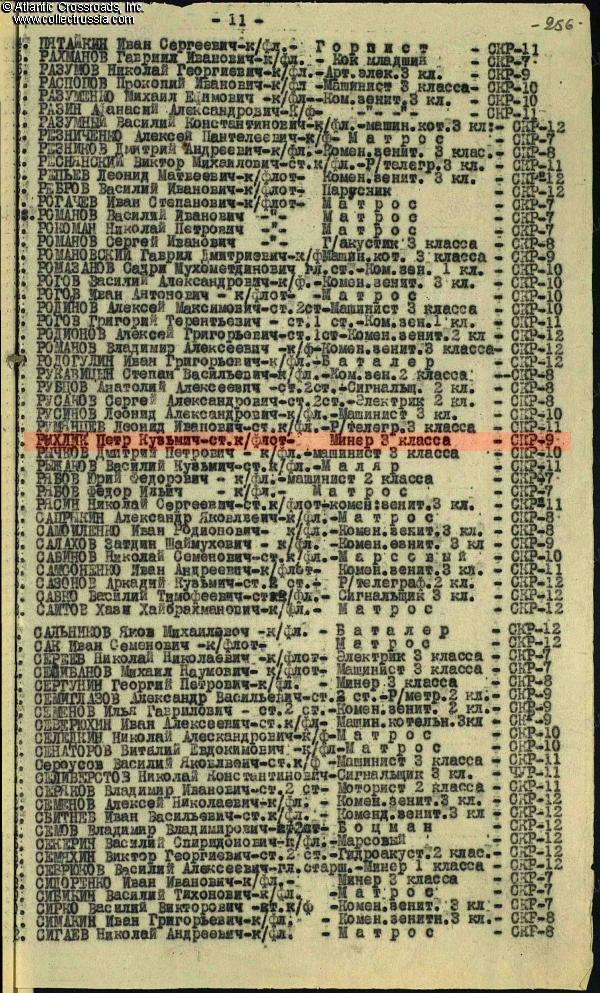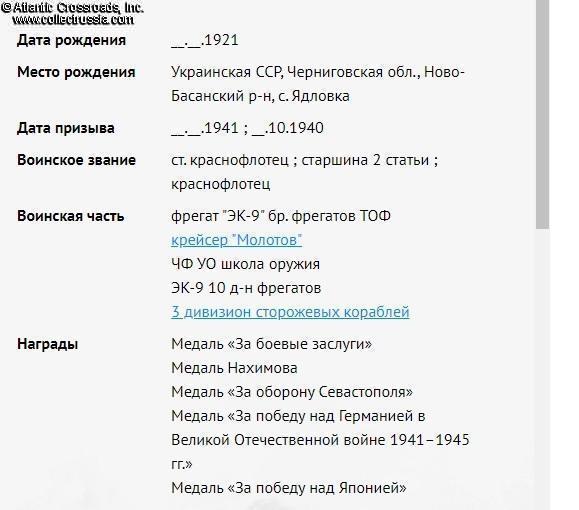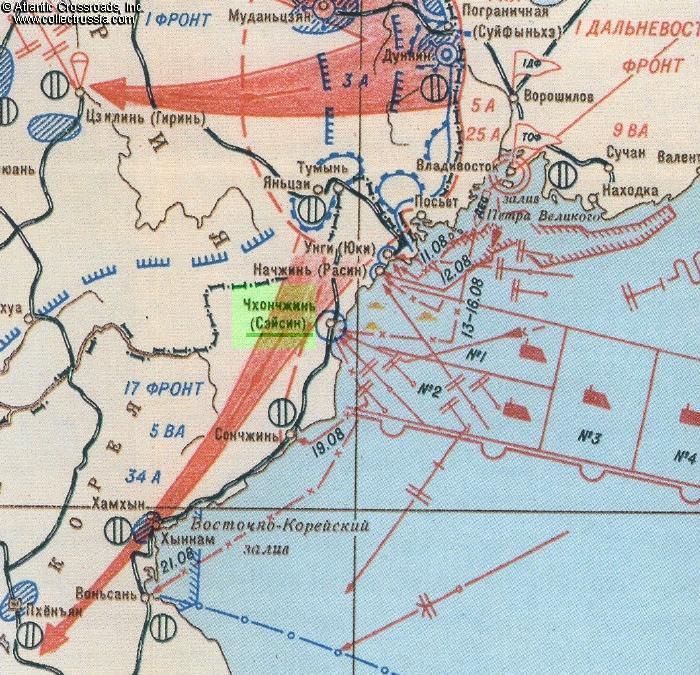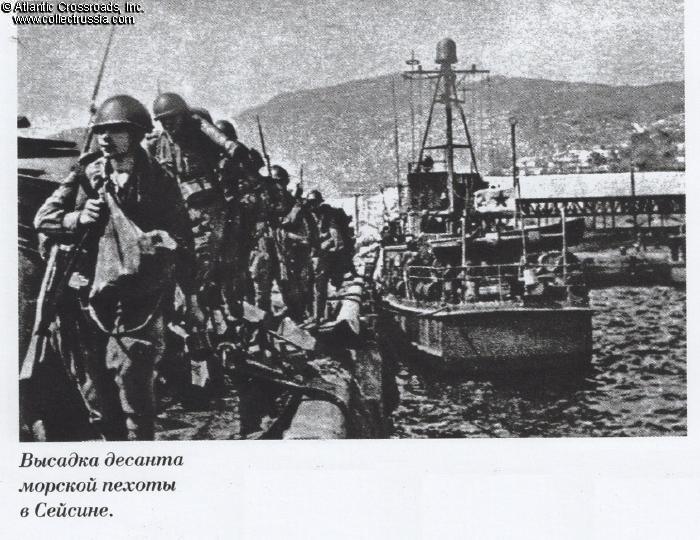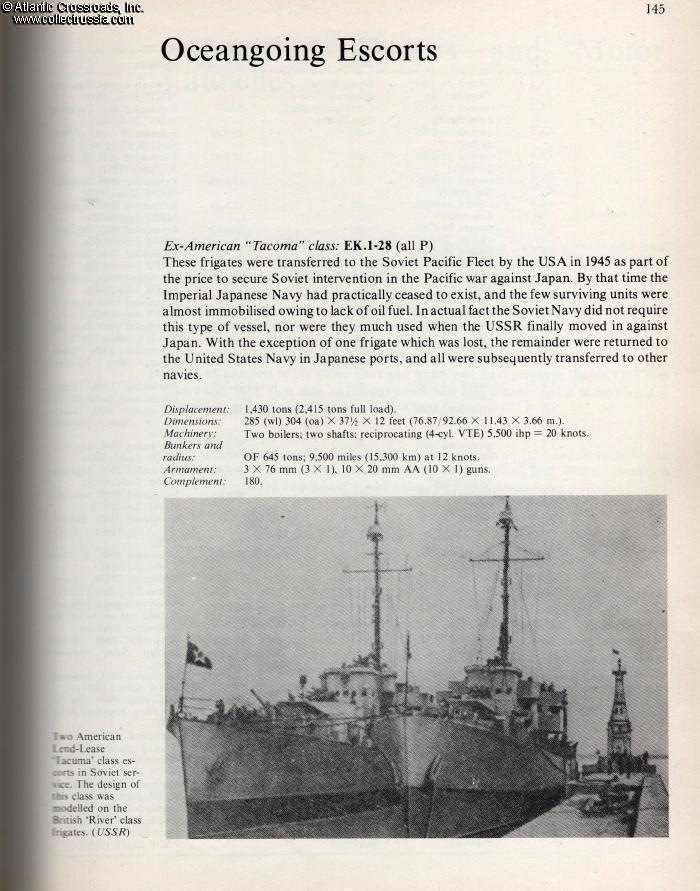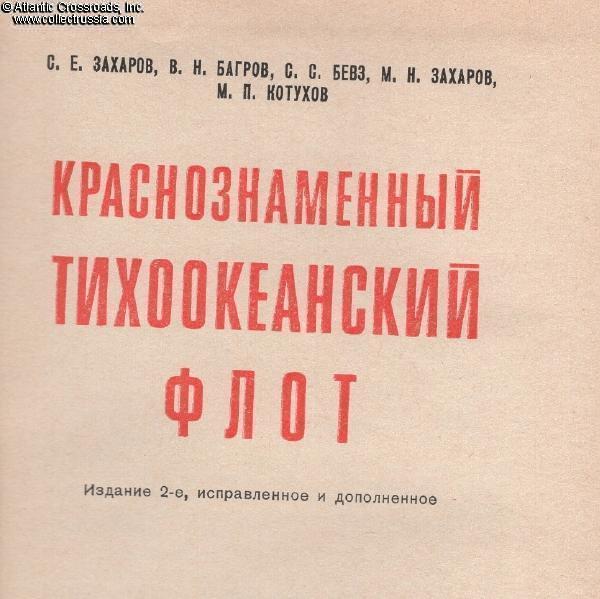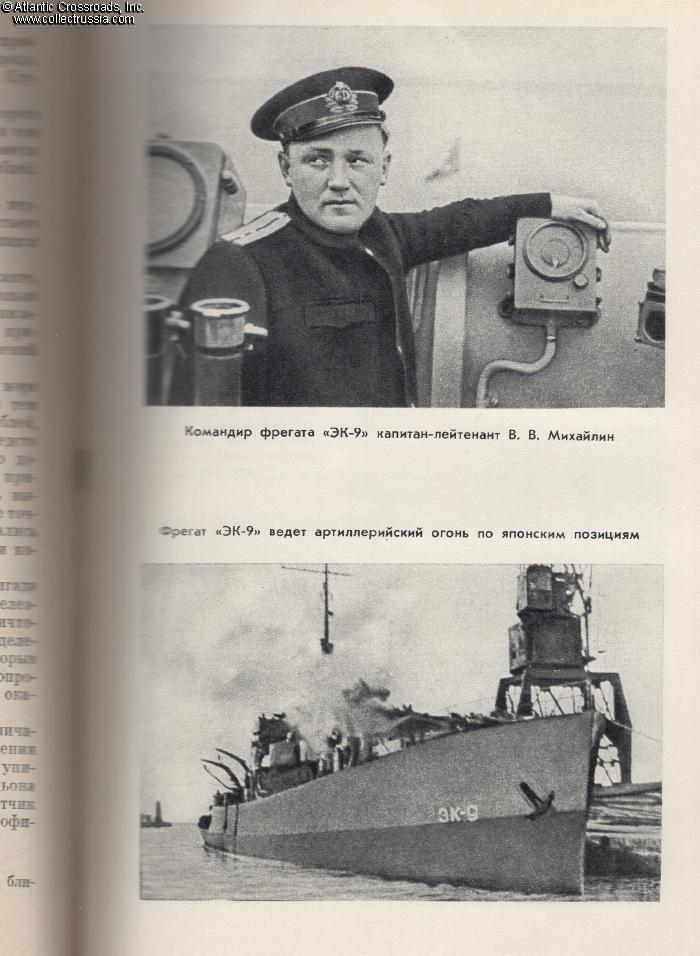
Nakhimov Medal, Variation 2, #9557, awarded on 20 October 1945 to Senior Seaman Petr Rykhlik (Петр Кузьмич Рыхлик), crewman of the American- built frigate EK-9, Pacific Fleet, for repelling an attack of a Japanese submarine during the Seishin Landing Operation in August 1945.
The medallion is in brass; measures 44.4 mm in height incl. eyelet, 36.2 mm in width; weighs 21.1 g not including the suspension. This version of the medal features a serial number stamped in a relatively small fount.
In outstanding, excellent condition. The medallion is completely free of any wear noticeable to the naked eye. The raised details of the bas-relief are exceptionally well-preserved, essentiall
The medallion is in brass; measures 44.4 mm in height incl. eyelet, 36.2 mm in width; weighs 21.1 g not including the suspension. This version of the medal features a serial number stamped in a relatively small fount.
In outstanding, excellent condition. The medallion is completely free of any wear noticeable to the naked eye. The raised details of the bas-relief are exceptionally well-preserved, essentially pristine. A great amount of the original "gilt" mint luster is clearly visible in the recessed field on both sides, especially the reverse, while the raised areas have acquired a very attractive even toning. There are no blemishes or significant oxidation spots.
The medal comes on original WW2 suspension, a two-layer model in steel with a self-locking pin. The ribbon is old, possibly original to the medal, but completely sound and immaculately clean. The connecting link appears to be of the period. Overall, this is a truly superb example of the Nakhimov Medal.
Born in a village of the Chernigov region of Ukraine, Petr Rykhlik enlisted in the Soviet Navy in 1940 at the age of 19. During the Patriotic War, he served with the Black Sea Fleet and took part in the defense of Crimea, Sevastopol and Caucasus. He was then transferred to the Pacific as a senior naval mine specialist of the frigate EK-9, formerly the USS Machias. The frigate was one of 28 vessels of the American Tacoma class leased to the Soviet Union by the US in early 1945. Designed for the oceangoing escort duty, these US-built frigates - along with numerous Lend-Lease submarine chasers and other craft - proved indispensable in the execution of the Soviet Blitzkrieg against Japan in August 1945.
From 15-17 August, Rykhlik took part in the amphibious assault on the Japanese port of Seishin (currently known as Chongjin, North Korea). The operation followed the Soviet landings at Yuki (now Sonbong) and Racine (Rason) on the northeastern coast of Korea that went almost unopposed, and the Soviet command apparently expected this experience to be repeated in the capture of Seishin. In fact, the Japanese garrison of Seishin - some 4,000 strong including cadets and officers of a military school - was not about to withdraw or surrender. Unbeknownst to the Soviets, the port boasted strong fortifications and had assistance of an armored train and some air support.
On 12 August, a group of Soviet torpedo boats approached Seishin harbor and found no enemy ships, further strengthening an impression that the Japanese had withdrawn north. On the morning of 13 August, a group of 11 naval infantrymen disembarked and after reconnoitering the port, found only some armed Korean guards that scattered without a fight. A larger contingent of Soviet naval infantry that went ashore that evening was met with only sporadic artillery fire and initially advanced unopposed. It then suddenly got counterattacked and practically wiped out. Soviet landing parties continued to arrive throughout this and the following day in a piecemeal fashion at various points around the port, all facing a similar scenario. In the end, the survivors withdrew to a small patch of land along the shore.
The EK-9 was a part of the hastily assembled, much stronger second wave of assault that carried some 5,000 naval infantry reinforcements. The convoy arrived in Seishin harbor in the pre-dawn hours of 15 August. According to Rykhlik's subsequent award recommendation, the part of the convoy escorted by the EK-9 came under attack by a Japanese submarine. Acting with utmost composure, Rykhlik readied the depth charges that were quickly put to good use in repelling the submarine and thus allowing all the ships to reach port without losses. The abortive attack of a lone Japanese submarine is indeed mentioned in several Soviet accounts of the Seishin operation.
When EK-9 reached its destination, Rykhlik helped to moor the ship to the seawall and thus facilitated the swiftest disembarkation of the naval infantry. According to at least one Soviet publication about the Pacific Fleet the frigate was particularly effective throughout the day in providing the fire support for the entire operation. Nevertheless, the Soviet troops ashore made no significant progress on 15 August in the face of increasing Japanese resistance. The port was finally cleared only on the following day with the help of massive air strikes and the arrival of larger Soviet transports carrying heavy artillery.
In recognition of his role in protecting the convoy during the Seishin Landing Operation, Rykhlik was initially recommended for the Order of the Red Star by his skipper, Capt. Lieut. V. Mikhailov (who would later rise to Admiral). The recommended award however was changed to the Combat Service Medal by the Commander of the Frigate Brigade of the Pacific Fleet and eventually, to the Nakhimov Medal which was bestowed upon Rykhlik by a general order of the Pacific Fleet on 20 September 1945.
As it appears from the available archival records, the Nakhimov Medal was Rykhlik's only high decoration of WW2 (although he also received medals for the Defense of Sevastopol, Defense of Caucasus, Victory over Germany and Victory over Japan.) He remained on active duty in the Soviet Navy for a while after the war, reaching the rank of Petty Officer, 2nd cl. before his retirement in 1947. It is interesting to note that his former vessel, the EK-9, was returned to the US after the war according to the Lend-Lease agreement. In 1951, it was given by the US to the Japanese defense forces, becoming the MSDF Nara - and thus making a full turnaround from the navies of two of Japan's WW2 adversaries!
Research Materials: b/w photocopy of the award commendation and relevant pages of the Russian-language book Order of the Red Banner
Pacific Fleet (C. 1973, Moscow) that have a photo of the EK-9 in action and its commander Mikhailov at his battle station.
$2,250.00 Add to cart



